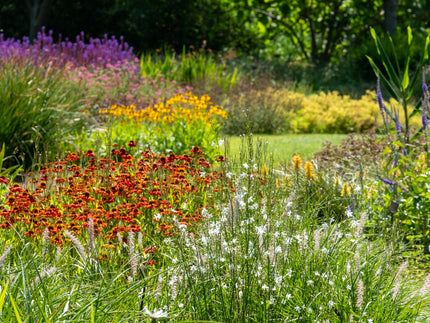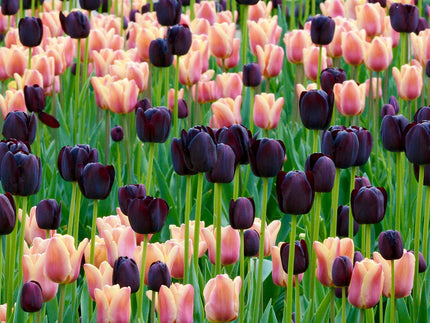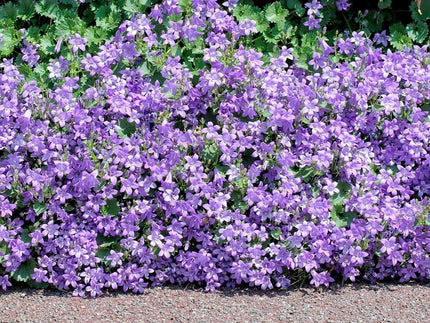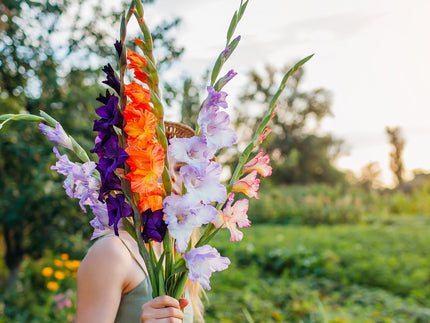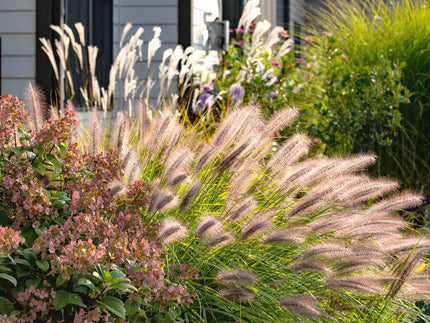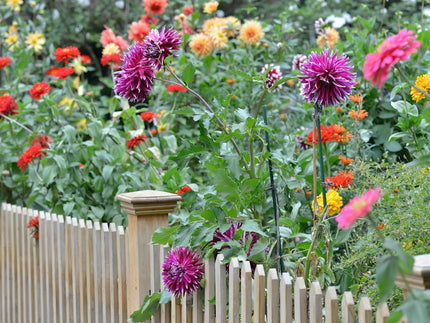Helichrysum
Helichrysum is a sun-loving, drought-tolerant perennial grown for its soft, silvery foliage and long-lasting flowers. Preferring well-drained soils and full sun, it’s well suited to gravel gardens, containers, and coastal settings. Fairly hardy and low-maintenance, Helichrysum is also highly attractive to pollinators, adding biodiversity to planting schemes. Not only an asset in the garden, the striking flowers and seedheads are useful for cut flower arrangements too.
How to plant:
—Plant as soon as possible after delivery. Helichrysum are supplied in spring and autumn and should be planted in the same season, ideally within a week of delivery while fresh and viable. The plant will require watering immediately after delivery. If you aren't ready to plant straight away, you can remove the plant from its packaging and sit it in a shallow dish of water in a bright place in the meantime.
— Helichrysum are supplied as root balls, which is like a potted plant with soil on the roots. It is often ok to plant root-ball Helichrysum plants directly into a clear space in a border, providing it is well cultivated with good soil. Avoid planting them directly into a space which will become over-crowded by more established plants or weeds later in the season, new plants will struggle to compete and could fail as a result.
— If the conditions are a little more challenging (dry, stony, rocky, sandy or other poor soil), or simply for the most reliable results, the root ball should be potted up in individual 15-20cm pots with multipurpose compost and grown on in a sheltered, sunny spot outdoors. Ensure pots are stood on a porous surface so that excess water can drain away freely. This will give them an easy start and then they can be transferred into a border once they have established more top and root growth. The plant will be ready to transplant into the garden once it has grown sufficient roots to hold the compost together.
—Plant so that the root ball is fully submerged in the soil, leaving the buds/crown just level with the soil surface. Any young shoots/leaves should be left exposed above the soil surface.
—If planting root ball plants directly into a clear border, choose a sunny position with crumbly, free-draining soil and space the plants 15-20cm apart if planting a group. Add multipurpose compost to each planting hole to help the new roots grow.
—Water-in after planting and continue to water regularly whenever the top 3cm of soil feels dry.
— When planting into the garden, choose a position in full sun or light shade. Helichrysum prefers a moist but well-drained soil. It can grow well in patio containers, at the front of the border, and in gravel gardens. Mark new plants with a label or cane so you can monitor your new plantings for pest damage and keep space clear around the young plant, removing excess growth from neighbouring plants in the border to reduce competition.
— Helichrysum is hardy down to around -5C, meaning it will require some winter protection in many areas.
Aftercare:
— Helichrysum takes 1-2 years to establish. New leaves emerge in spring in the first year, with flowers appearing from late spring or early summer. They may produce some flowers in the first year, but generally flowers from the second years onwards.
— After flowering, trim back spent blooms and leggy stems to maintain a compact shape and encourage fresh growth.
— Helichrysum is evergreen or semi-evergreen in most areas and may lose some older leaves in autumn. Remove any dead or damaged foliage to keep the plant tidy.
— Space plants around 30cm apart. Over time, Helichrysum will form dense clumps that can be divided in early spring or autumn if needed.
— Helichrysum requires well-drained soil in full sun. Avoid waterlogged conditions, especially in winter, to prevent root rot.





















































































